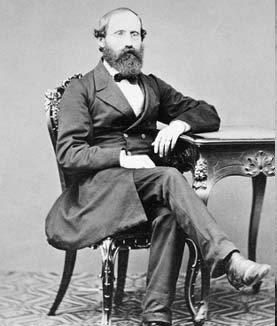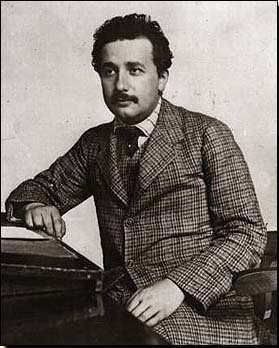 Carl Gauss (1777-1855) |
 Georg Riemann (1826-1866) |
 Albert Einstein (1879-1955) |
 Carl Gauss (1777-1855) |
 Georg Riemann (1826-1866) |
 Albert Einstein (1879-1955) |
COURSE: MATH 4900
TIME AND PLACE: 11:20-12:50 MTWRF in Gilbreath Hall 314
INSTRUCTOR: Dr. Robert Gardner
OFFICE: Room 308F of Gilbreath Hall
OFFICE HOURS: By appointment.
PHONE: 439-6979 (308F Gilbreath), Math Department Office 439-4349
E-MAIL: gardnerr@etsu.edu
WEBPAGE: faculty.etsu.edu/gardnerr/gardner.htm (see my webpage for a copy of this course syllabus, copies of the classnotes in PDF and Postscript formats, and updates for the course).
TEXT: Differential Geometry and Relativity Theory, An Introduction by Richard L. Faber, Monographs and Textbooks in Pure and Applied Mathematics, Volume 75, copyright 1983 by Marcel Dekker, Inc. (ISBN 0-8247-1749-X).
SUPPLEMENTARY TEXT: Relativity: The Special and the General Theory by Albert Einstein. This can be found as a cheap paperback, but is also available online, for example at "Google books.''
PREREQUISITES: Multivariable calculus and linear algebra (the more, the better!).
ABOUT THE CLASS: This course will be roughly broken into three parts: (1) differential geometry (with an emphasis on curvature), (2) special relativity, and (3) general relativity. We will spend about half of our time on differential geometry. We will then take a "break" and address special relativity. The class will finish (and climax) with general relativity and a discussion of black holes. We will deal at length with the (differential geometry) topics of curvature, intrinsic and extrinsic properties of a surface and manifold. We will briefly survey special relativity (giving coverage that a physicist would consider fairly thorough, but which a geometer would consider a "shallow survey"). In particular, we will "outline" (as the text puts it) Einstein's field equations and derive the Schwarzschild solution (which involves a nonrotating, spherical mass). We will see the differential geometry concepts come to the aid of gravitation theory. We will discuss gravitational redshift, precessions of orbits, the "bending of light," black holes, and the global topology of the universe.
MY TEACHING STYLE FOR THIS CLASS: We will go at a maddening rate. My lectures will follow from the overheads which I present in class and which are available online.
GRADING: Your grade will be determined based on your performance on assigned homework problems. Very roughly, you will be assigned 3 or 4 problems per section we cover.
POWERPOINT PRESENTATION: A presentation of "Relativity and Black Holes" will be given on July 27 (tentative date). This show includes a survey of the results we will see this semester. It also includes extensive historical references to the individuals responsible for these results (Lorentz, Einstein, Minkowski, and Schwarzschild). Since this is a math class, we will not spend any time on observational astronomy, but the presentation includes some of the observational evidence for black holes. The primary source for the presentation is Kip Thorne's excellent Black Holes and Time Warps: Einstein's Outrageous Legacy (1994, W. W. Norton Publishing). A web-based version of the show is available at http://faculty.etsu.edu/gardnerr/planetarium/relat/relatabs.htm.
VIDEOS: We will watch two videos in class. "The Shape of Space" is a clever introduction to three-dimensional manifolds. We will discuss the possible global topologies of our universe, and ways to empirically detect this structure. A webpage by The Geometry Center accompanies the video: www.geom.umn.edu/video/sos/. The webpage gives additional information on the topic, as well as some hands-on projects suitable for high-school-level students.
The Science Channel aired an episode of Through the Wormhole (starring Morgan Freeman) on June 15, 2011 titled "Is There an Edge to the Universe?" A brief description of the episode is online at:
ABOUT THE INDEPENDENT STUDY: You will attend the same lectures as the graduate-level Differential Geometry (MATH 5310) class. However, you will be given specific assignments for the undergraduate Independent Study and your class will be different.



1.2=Gauss Curvature: normal section, principal curvature |
||
1.4=First Fundamental Form: metric form, intrinsic property |
||
Video: Is There an Edge to the Universe? |
||
Einstein: Preface, 1.1-1.6 |
||
Einstein: 1.7-1.12 |
||
2.7=Lorentz Transformation: invariance of the interval |
||
3.6=Geodesics: timelike, lightlike, spacelike 3.7=Field Equations: Ricci tensor, Einstein: 2.18-2.11, Appendix III |
||
Black Holes: Schwarzschild radius |
||
| |
|||
1.3 |
2d, 7a, 7b, 7c, BONUS: 8b |
||
1.5 |
3a, BONUS: 8 |
||
1.9 |
4, BONUS: 6a |
||
2.5 |
2 |
||
2.7 2.8 |
3abc BONUS: 6 8ab |
||
3.9 3.10 |
3 2 |
||
Return to Bob Gardner's home page Last updated: August 10, 2012.